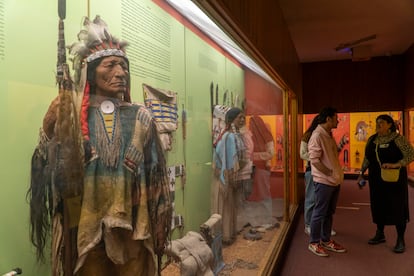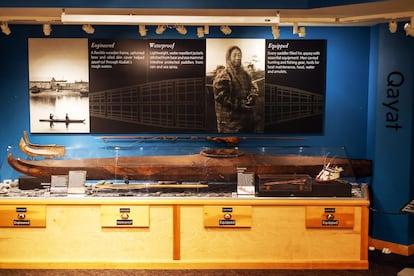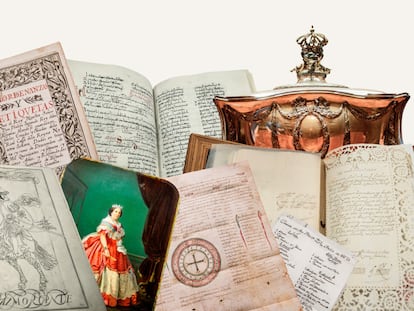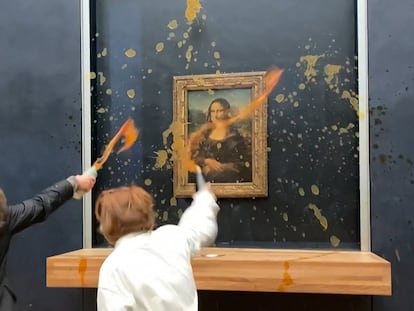Closing a chapter of historical mourning: US museums accelerate the return of human remains to Native tribes
An update to a federal law known as NAGPRA requires institutions to obtain the consent of indigenous nations for displays of funerary artifacts and other cultural elements


The United States has undertaken the return of human remains and burial material to Indigenous people. Major museums such as the Museum of Natural History in New York (one of the most visited in the country, with 4.5 million tourists in 2019), have closed some of their rooms to comply with a federal law from 1990 that has been under review for three years, and whose updates went into effect in mid-January: the Native American Graves Protection and Repatriation Act (NAGPRA), whose implementation had been languishing to date. The goal is to return all the human remains and cultural objects scattered throughout the country within a period of five years. Responsibility for the inventory will now fall to the museum and will no longer depend on the claim of an Indigenous community.
The move takes place in the context of a global review of the collections of the world’s main museums, triggered by the debate on cultural property and a critical reading of history. The return of Native human remains and funerary artifacts exhibited in display cases represents a step further: It is not so much a question of cultural rereading, but of fundamental human rights, those inherent to any human being even after death. Shannon O’Loughlin of the Choctaw Nation, in southeastern Oklahoma, explains that “NAGPRA is a strong human rights law that requires government institutions and agencies to consult with Native nations, direct descendants, and Native Hawaiian organizations to repatriate Native corpses, their funerary belongings, cultural heritage and religious objects that have been stolen and appropriated” by cultural or educational institutions, such as the Peabody Museum at Yale University, which has repatriated the remains of about 500 people but still has another 600 in its holdings.
Two years ago, Harvard’s then-president raised a storm by confirming the existence of more than 22,000 sets of human remains in the university’s holdings, including those of 15 likely enslaved Africans. Museums across the country are accelerating the inventory of their collections, as the new law requires institutions to seek the consent of Native tribes to display remains or objects. The reevaluation affects, among many others, the Field Museum of Natural History in Chicago, which houses the third-biggest collection in the country, the Cleveland Museum of Art and the Museum of Nature and Science in Denver, which have recently closed or covered up exhibits of Native American artifacts. Others, such as those in New York and the Illinois State Museum (with almost 6,000 human remains and 30,000 funerary objects), and academic institutions such as Harvard took steps ahead of the new legal deadline: the university published a list of remains in 2022, and the New York Museum of Natural History removed potentially sensitive objects in October, before closing two entire rooms dedicated to Indigenous cultures at the end of January.
In the Harvard collections there were also hundreds of hair samples from Indigenous people around the world, including those from some 700 Native children who attended segregated boarding schools in the United States. It was bequeathed by an anthropologist in the 1930s, when many collections were not yet museums but crowded cabinets of curiosities fed by the discoveries of archaeological digs in reservations at the end of the 19th and beginning of the 20th centuries, or by the chance discovery of remains by farmers or road workers.
The NAGPRA legislation, notes O’Loughlin, who is a lawyer and executive director of the Association on American Indian Affairs — which was involved in the processing of the law — “declares that these institutions and organizations do not have any legal right over corpses and cultural objects. However, they have continued to decide as if they were the owners of the bodies and cultural heritage of the Natives.” Why cultural institutions have taken so long to apply a 1990 law is the subject of multiple interpretations, but the Alliance of American Museums (AAM) has not responded to this newspaper’s questions on the matter, nor has the Museum of Natural History of New York.
“After 12 years of fighting to strengthen the provisions of the law, new, even stronger regulations came into effect on January 12, requiring institutions to obtain the free, prior and informed consent of Native nations, direct descendants and Native Hawaiian organizations, as the case may be, before disposing of the Native bodies and cultural objects in their possession. This includes the display of any of these objects, but also research or any other purpose,” explains O’Loughlin. There is no room for interpretation: “The United States Congress has declared that Indigenous cultural heritage is the property of Indigenous nations and that they are the only custodians.”

Since 1995, American museums have reported the existence of more than 208,000 human remains in their holdings. But in the last 33 years not even half have been returned, the information website ProPublica explained last week. Currently, according to the government database that was used to draft the law, cultural and educational institutions still hold some 96,000 human remains. The one in New York alone houses 2,200, in addition to thousands of funerary objects.
In the tug-of-war between Indigenous communities and experts (curators, academics, and researchers), there was a flawed criterion of lending more weight to written than oral sources when determining the origin or final destination of remains. Hence, some museums have clung to this pre-eminence of the written word to delay their response or even resist returning items in their possession. Doubts about the origin of the remains have also contributed to the length of the process. “Since so much time has passed since NAGPRA was enacted in 1990, it was time to update it,” explains archaeologist Myra Masiel-Zamora, of the Pechanga tribe and curator of the Pechanga Cultural Center, in Temecula, California.
Oral versus written history
“Many of the NAGPRA updates rely on oral history and traditional knowledge as a starting point for making a legal claim, so tribes no longer need to rely on ethnohistorical records or historical documentation written by non-governmental researchers,” adds the archaeologist. Masiel-Zamora emphasizes that the equation of the oral history and tradition of the communities with the written documentation “allows our traditional knowledge to be elevated to the maximum importance and the greatest credit.” The reform of the law also eliminates the concept of “culturally unidentifiable,” which has delayed return for decades.
Unlike the objects of colonial plunder that museums around the world are returning to their countries of origin, the restitution of human remains and funerary goods goes beyond the satisfaction of memory: it touches on the taboo that surrounds death and even the afterlife for some cultures. The display of sacred and ceremonial objects out of context frequently made Indigenous visitors uncomfortable. “The process of being able to bring a family member and their belongings home to rest should always be considered a respectful act and the right thing to do. We should all treat people, things, places, and living and dead beings of all cultures in a respectful manner. That is why we only ask that our family members and their belongings be treated in a culturally appropriate way,” says Masiel-Zamora. In the spirit of the new law there are echoes of the tone set in the early 2000s by the United Nations Declaration on the Rights of Indigenous Peoples, a non-binding human rights standard.
Another, more prosaic factor that explains the delay in the implementation of the law is simply lack of material resources; that is, the precarious budget of centers that depend on donations for their survival. “Each museum has different financial resources, which has unfortunately affected the speed of NAGPRA implementation based on staff, time and overall resources available. I hope that the new regulation will help museums prioritize NAGPRA and develop a more meaningful dialogue with the Indigenous peoples of the United States,” concludes the archaeologist.
Sign up for our weekly newsletter to get more English-language news coverage from EL PAÍS USA Edition
Tu suscripción se está usando en otro dispositivo
¿Quieres añadir otro usuario a tu suscripción?
Si continúas leyendo en este dispositivo, no se podrá leer en el otro.
FlechaTu suscripción se está usando en otro dispositivo y solo puedes acceder a EL PAÍS desde un dispositivo a la vez.
Si quieres compartir tu cuenta, cambia tu suscripción a la modalidad Premium, así podrás añadir otro usuario. Cada uno accederá con su propia cuenta de email, lo que os permitirá personalizar vuestra experiencia en EL PAÍS.
¿Tienes una suscripción de empresa? Accede aquí para contratar más cuentas.
En el caso de no saber quién está usando tu cuenta, te recomendamos cambiar tu contraseña aquí.
Si decides continuar compartiendo tu cuenta, este mensaje se mostrará en tu dispositivo y en el de la otra persona que está usando tu cuenta de forma indefinida, afectando a tu experiencia de lectura. Puedes consultar aquí los términos y condiciones de la suscripción digital.
More information
Archived In
Últimas noticias
Most viewed
- Sinaloa Cartel war is taking its toll on Los Chapitos
- Oona Chaplin: ‘I told James Cameron that I was living in a treehouse and starting a permaculture project with a friend’
- Reinhard Genzel, Nobel laureate in physics: ‘One-minute videos will never give you the truth’
- Why the price of coffee has skyrocketed: from Brazilian plantations to specialty coffee houses
- Silver prices are going crazy: This is what’s fueling the rally










































